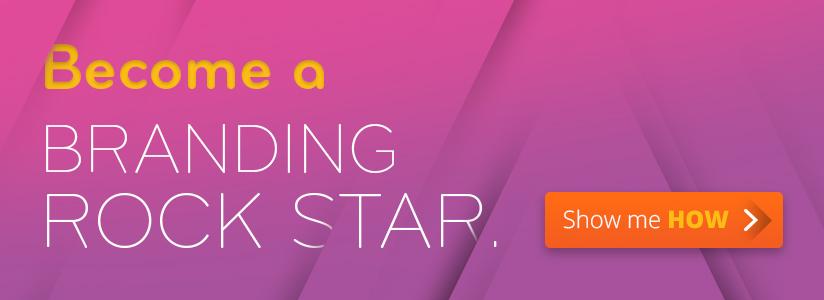
There are literally thousands of books about branding (about 298,000 according to a Google Books search). You could devote a career to studying the topic, and many people have.
But some of the best, most relevant lessons are very close at hand. You need to look no farther than others in your field.
I’ve heard a number of entrepreneurs say, “we have no competitors.” Almost always, that's dangerous ego-speak. Unless your prospects have no alternative at all but to use your product or service, you have competition. (And if you’re among the innovators who truly do not, savour the moment. It won’t last.)
Competition is awesome. It’s what makes businesses innovate at the fastest possible rate. And it can also be the source of amazing market intelligence that can teach you plenty. Here are 5 of the most valuable branding lessons to be learned from your competitors.
Lesson One: The Value of Brand Equity
What differentiates the highest from the lowest-priced competitors in your field? The ones at the top end might have the most experience, the best tools, and the most in-depth business practices. Probably the nicest offices too. But you know what makes the biggest difference?
Brand equity. That’s the intangible element that enables one brand to charge considerably more than competitors. Perceived value can sometimes be linked to product quality, but not necessarily. The definite connection is to demand. And the winners in your niche are the ones who have created the most desirable and sought-after brand.
Study what your best-branded competitors are doing for marketing, presentation and lead generation. Does their website use the inbound marketing methodology to attract, nurture, convert and delight? Do they have amazing product design or packaging? What would be required to take your brand to a similar – or even higher level? Wouldn’t the returns justify the investment?
Lesson Two: The Importance of an Integrated “Voice.”
“Voice” can be a difficult concept to grasp. When you think of world-leading brands like Apple or IKEA, it becomes clearer. The language used, tone, imagery and overall messaging of powerful brands are consistent across all platforms, from their television commercials and print advertising to social media and point-of-purchase displays. For large corporations with marketing teams in cities around the world, this is a mightier feat than it appears.
Now take a look at your own most successful competitors. How do they project a uniform, consistent voice from their website to their tweets and Facebook posts? If they are doing a fantastic job, you know where the bar is set, and can plan to do better. And if they’re all over the map, here is an opportunity to dominate.
Perfect your brand’s unique voice, and make it a core part of your marketing strategy. Are you more risqué or more conservative than others? Is your product better priced or more affordable? Define how these differentiating traits should be consistently emphasized, and follow through at every touch point with prospects and customers. When you begin to think about your brand voice, overall consistency (what branding depends upon most) becomes a more visible target.
Lesson 3: Over-Deliver on the Promise
You may have heard it said that your brand is a promise. That’s actually a very precise definition. And no two competitors should have identical promises, or else they’ll lack distinction in the marketplace. McDonalds, Burger King and A&W are all Quick Serve Restaurant (QSR) chains with burgers as a core product, yet each has a distinct – and rapidly evolving – promise to customers. Can you imagine McDonald's running this commercial?
What is the brand promise of your #1 competitor? How are they doing at delivering on that? Now what is your own promise to customers? Set a lofty one congruent with your core values and benefits – and never fail to meet it. Success will follow.
Lesson 4: How Does Your Logo Measure Up?
I often remind people (including marketers) that a logo in itself does not constitute a brand, but it’s at the heart of all brands. There are very few massively successful brands with terrible logos, and the world’s best branding minds create a legacy of amazing logo design. It’s no coincidence.
What does the strongest competitor in your field have for a logo? Think about the style and flavour, the message it delivers about the company and its offerings. Try to step back and look at your own logo as if you were a prospective customer seeing it for the first time. What would expect to receive from this business in terms of price, quality, value and service? Would you pay a premium for it compared to similar offerings?
If you don’t feel like a good judge, talk to a brand expert. (By this, I don’t mean your nephew in first year of design school, but someone with at least a decade of branding experience.) Ask for a no-punches-pulled critique and competitive analysis of your logo within its market.
Redesigning a logo may seem like a frightening prospect, but done right it can rejuvenate your brand, your employees and your entire business.
Your direct competitors may at first be a strange or uncomfortable place to look for branding lessons, but in reality they have more in common with you than anyone else. Your competition have similar struggles, deal with the same customers, and have put a lot of thought into what a win looks like in your industry. Their back story and brand promise may (and should) be different, but often the best way to identify opportunities in your competitive landscape is to see where others are finding – and better yet overlooking – success.
For a complimentary, no-strings assessment of your brand and help creating a new strategy, use the button below to book a free Pro Branding Boot Camp.

Laurier Mandin is president of Graphos, the Edmonton web design company, branding consultancy and digital marketing agency he founded in 1993.